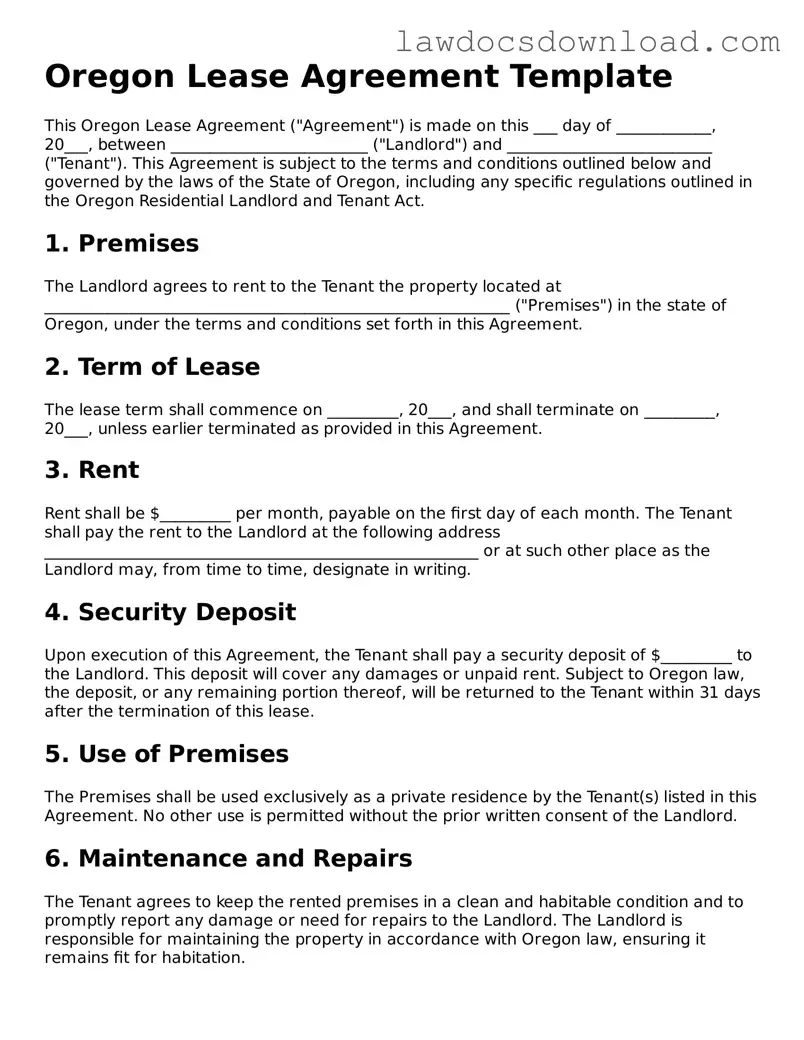Oregon Lease Agreement Template
This Oregon Lease Agreement ("Agreement") is made on this ___ day of ____________, 20___, between _________________________ ("Landlord") and __________________________ ("Tenant"). This Agreement is subject to the terms and conditions outlined below and governed by the laws of the State of Oregon, including any specific regulations outlined in the Oregon Residential Landlord and Tenant Act.
1. Premises
The Landlord agrees to rent to the Tenant the property located at ___________________________________________________________ ("Premises") in the state of Oregon, under the terms and conditions set forth in this Agreement.
2. Term of Lease
The lease term shall commence on _________, 20___, and shall terminate on _________, 20___, unless earlier terminated as provided in this Agreement.
3. Rent
Rent shall be $_________ per month, payable on the first day of each month. The Tenant shall pay the rent to the Landlord at the following address _______________________________________________________ or at such other place as the Landlord may, from time to time, designate in writing.
4. Security Deposit
Upon execution of this Agreement, the Tenant shall pay a security deposit of $_________ to the Landlord. This deposit will cover any damages or unpaid rent. Subject to Oregon law, the deposit, or any remaining portion thereof, will be returned to the Tenant within 31 days after the termination of this lease.
5. Use of Premises
The Premises shall be used exclusively as a private residence by the Tenant(s) listed in this Agreement. No other use is permitted without the prior written consent of the Landlord.
6. Maintenance and Repairs
The Tenant agrees to keep the rented premises in a clean and habitable condition and to promptly report any damage or need for repairs to the Landlord. The Landlord is responsible for maintaining the property in accordance with Oregon law, ensuring it remains fit for habitation.
7. Alterations
Tenant shall not make any alterations, improvements, or additions to the Premises without the prior written consent of the Landlord.
8. Governing Law
This Agreement shall be governed by and construed in accordance with the laws of the State of Oregon.
9. Entire Agreement
This document and any attached addenda constitute the entire agreement between the parties and supersede any previous negotiations, understandings, or agreements between the parties. No amendment or variation of this agreement shall be valid unless it is in writing and signed by both the Landlord and the Tenant.
10. Signatures
By signing below, both the Landlord and the Tenant agree to all terms and conditions outlined in this Oregon Lease Agreement.
Landlord Signature: __________________________________ Date: _____________
Tenant Signature: __________________________________ Date: _____________
